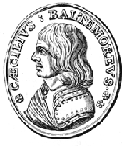|
|
|
|
|
Too
Close to Call:
(continued from first
page)
quorum of the members of
the House of Representatives and the Senate of the United States were watched
by a small national audience as they performed duties prescribed under
the Constitution of the United States designed to bring closure to what
was one of the closest elections in American History. The following day,
while the New York Times carried a front page photograph of the
proceedings, the Baltimore Sun failed to mention them at all.
There had been close presidential
elections before. In 1888, Benjamin Harrison, the winner of the electoral
vote, and thus the presidency, failed to carry the popular vote. In 1876
Congress, for the first and last time, entrusted the final count to an
Electoral Commission that became embroiled in controversy when it awarded
the electoral vote to the loser of the popular vote, Rutherford B. Hayes.
In 1824, supporters of Andrew Jackson claimed he had won the popular vote,
but because six of the then twenty-four states still chose their Electors
in the State Legislature, we will never know for certain. By far the most
influential of all close elections, however, was that of 1800 when Maryland's
and the Nation's electoral vote was evenly divided between Aaron Burr and
Thomas Jefferson. Only after 36 ballots in the House of Representatives
was Jefferson elected President. To prevent a similar occurrence from ever
happening again, the 12th Amend-ment to the Constitution was adopted whereby
electoral votes were to be cast separately for President and Vice President,
and electors could not vote for more than one candidate from their home
state. More importantly, however, the Election of 1800 marked the beginning
of a trend towards direct election of presidential electors by the people
and a gradual shift (most notable first in the election of 1824) in favor
of the winner of the popular vote in each state determining the allocation
of the electoral vote. I say gradual, because Maryland did not require
its electors to vote for the winner of the popular vote until 1957. |
|
|
|
|
|
 |
|
|
|
|
|
One
of the closest elections in Maryland history, and, as John Willis points
out in Presidential Elections in Maryland (1986), the "closest
of any contest between the Democratic and Republican parties in any state
in the history of American presidential elections," was the Presidential
election of 1904. In matters of procedure, the presidential election of
1904 was a watershed in the Maryland political process. It was the first
presidential election in which a secret paper ballot, supplied at public
expense, and without political symbols of any kind, was issued to each
voter. Candidates for Electors were listed under the presidential and vice
presidential candidates for each party (there were four parties recognized
in the election, Democratic, Republican, Prohibition, and Socialist). Voters
were free to mark their ballots for up to eight candidates of any party.
Partisan newspapers in the weeks before the election carried explicit instructions
such as those issued by the Democratic Central Committee and published
on the front page of the Annapolis Capital on November 1, 1904,
a week before the election.
While it was clear within
a day of the 1904 election that Teddy Roosevelt and his running mate Charles
Fairbanks were the winners nationally, the election remained in doubt in
Maryland for several days and was not officially resolved until the meeting
of the board of canvassers in Annapolis on November 30, 1904. On November
12, the Baltimore American carried the headline "State Hanging in
the Balance. It is a Neck and Neck Race in Maryland," and proceeded to
announce that it appeared that the electoral vote would be evenly divided
between the Democratic and Republican candidates. Voters had some difficulty
with the new ballots. From Cumberland came the report that in Allegany
County the vote for Congress
fell behind the
presidential vote by 400
votes in each party "due to the voter failing to find the name of the congressman
on the ballot after he had marked the place for President." Charles County
failed to lock one or more of its ballot boxes and charges of fraud
began to surface, although by November 17, the
(continued
on Page 3)
|
|
|
|
|




